We all know that having bad posture can create serious health issues, from neck and back pain to digestive problems. The effects of poor posture extend to psychological aspects and are documented extensively, especially on one’s confidence level. But did you know that poor posture also makes you shorter? Indeed, your posture is an utterly important factor when it comes to reaching your true height. Over time your poor posture can provoke your body to slump and slouch, which can profoundly stunt your height growth and reduce your current height. This article will go into detail about the importance of good posture, thereby suggesting ways to correct your body posture to help you grow taller.
What is posture?
Posture is how you hold your body. There are two types of posture:
- Static posture: This posture is how you hold yourself when you are not moving, like when you are sleeping, standing, or sitting.
- Dynamic posture: How you hold yourself when you are moving is dynamic posture, for instance, when you are running, walking, or bending over to pick something up.
It is crucial to make sure that you have good static and dynamic posture. The key to good posture is the position of your spine. Your spine has three natural curves – at your low back, mid back, and neck. The correct posture should maintain these curves while avoiding increasing them. Your head should be above your shoulders, and the top of your shoulders should be over your hips.
The effects of poor posture
If you are in your growing years, that is, your growth plates are still active and have not fused yet, poor posture will hinder your height growth process, and you will end up shorter than your genetically predetermined height. Once puberty is over and you have reached your final adult height, poor posture will rob your height of inches, which makes you look shorter than you really are. Such a horrible prospect, isn’t it, especially for those with modest height who desire nothing more than growing a little bit taller.
What is more, poor posture can be bad for your health. Slouching or slumping for a long time can:
- Cause neck, shoulder, and back pain
- Make it harder to digest your food
- Misalign your musculoskeletal system
- Wear away at your spine, making it more fragile and prone to injury
- Decrease your flexibility
- Affect your balance and increase your risk of falling
- Affect how well your joints move
- Make it harder to breathe.
How can fixing your posture increase your height?
While standing
The easiest way to illustrate this is by looking at this image below. Let’s assume the lady’s height is 5’8’’. When standing with her typical poor posture, her height is reduced by 1.5 in or 3.9 cm, which makes her appear just 5’6.5’’ tall.
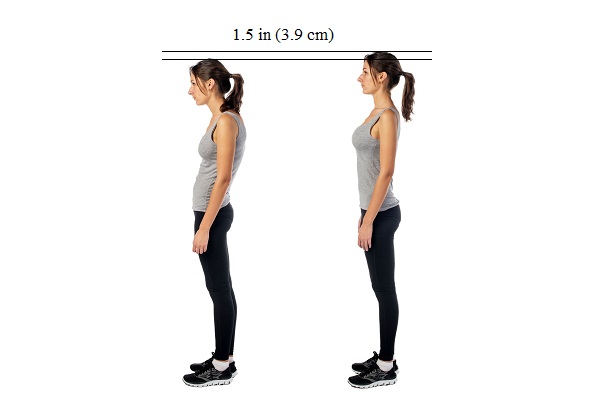
When standing with her typical poor posture, her height is reduced by 1.5 in or 3.9 cm
A purely geometric approach to this with simplifications will help you further understand the height reducing effect of poor posture. While standing, your body consists of, let’s say, two straight lines: one from your head to your waist, and the other from your waist to your feet. When you are slouching or slumping, the top straight line becomes a curve. When this happens, the appeared height is reduced. Now take a look at the picture below. Let’s assume the length of the straight line is H, which means H is the real height of your upper body when you stand up correctly. L is the shortened height when slouching. The simplified calculation below shows that slouching can decrease the height of your upper body by up to 10%. In most cases, poor posture easily reduces your height by 1-2 inches.
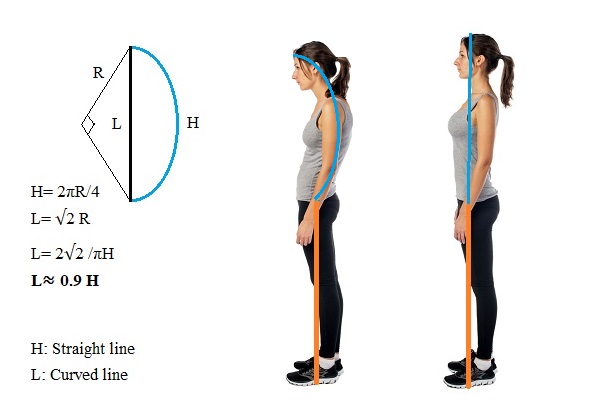
Poor posture easily reduces your height by 1-2 inches
While sitting
The same comparison can be made when you are sitting. A curved upper body decreases your appeared height, even more when seated. Check out the image below:
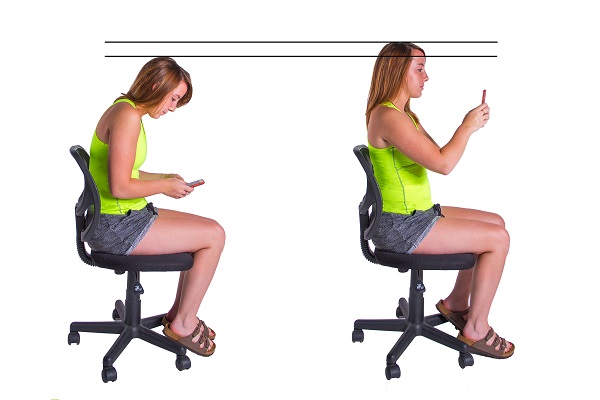
A curved upper body decreases your appeared height, even more when seated
How can you improve your posture in general?
There are a few suggestions for you to improve your posture in general, specifically:
- Be mindful of your posture during your daily activities such as walking, washing dishes, or watching television.
- Maintain a healthy weight. Extra weight can cause problems for your pelvis and spine, weaken your abdominal muscles, and contribute to low back pain. All of these can hurt your posture.
- Stay active. All types of exercises may help you correct your posture in one way or another, but there are certain exercises that are especially helpful. They include tai chi, yoga, and other classes that focus on body awareness. It is also a good idea to do exercises that strengthen your core (muscles around your abdomen, back, and pelvis).
- Make sure your work surfaces are at a comfortable height for you, whether you are cooking dinner, sitting in front of a computer, or eating a meal.
- Wear comfortable and low-heeled shoes. High heels can easily throw off your balance and force you to walk differently. This harms your posture and puts more stress on your muscles.
How to correct your posture when standing?
In order to correct your posture when standing, you should:
- Stand up tall and straight
- Keep your shoulders back
- Put your weight mostly on the balls of your feet
- Keep your head level
- Pull your stomach in
- Let your arms hang naturally at your sides
- Keep your feet about shoulder-width apart.
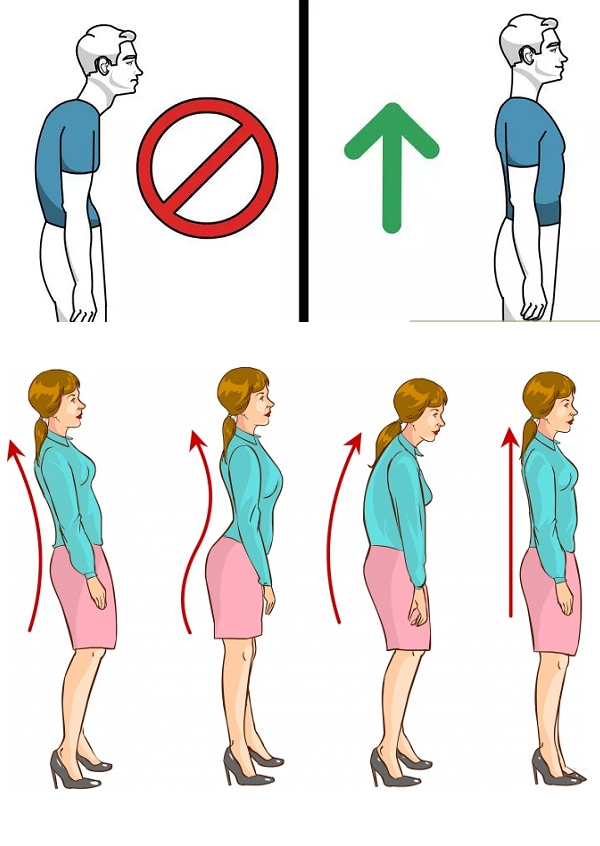
How to correct your posture when standing?
How to correct your posture when sitting?
Many people spend a lot of their time sitting – either at home, at work, or at school. It is imperative to sit properly and to take frequent breaks:
- Take brief walks around your home or office
- Often switch your sitting positions
- Do not cross your legs. Instead, keep your feet on the floor with your ankles in front of your knees.
- Gently stretch your muscles every so often to help relieve muscle tension
- Relax your shoulders, but they should not be rounded or pulled backwards
- Make sure that your feet touch the floor, or use a footrest if that is not possible
- Make sure that your back is fully supported. Use a back pillow or other back support if your chair does not have a backrest that can support your lower back’s curve.
- Keep your elbows close to your body. They should be bent between 90 and 120 degrees.
- Make sure that your thighs and hips are supported. You should have a well-padded seat, and your thighs and hips should be parallel to the floor.
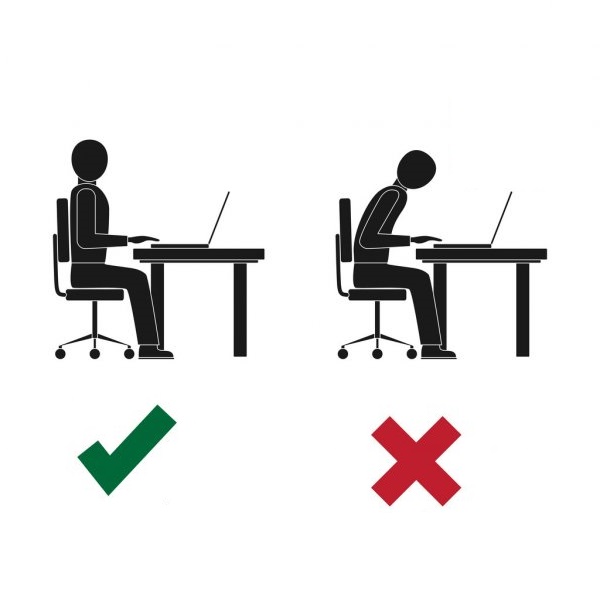
How to correct your posture when sitting?
It is important to stay mindful of your posture all the time to ensure a pain-free and comfortable lifestyle as well as a higher chance of growing taller. If you are already an adult and can no longer increase your height naturally, by following our tips on how to correct your posture, you will enhance your confidence level and avoid appearing shorter than your actual height.
